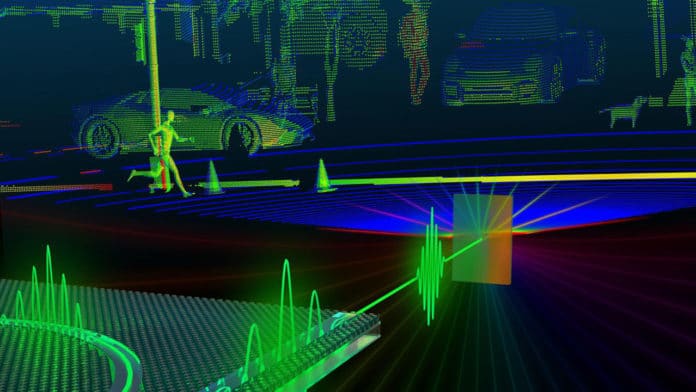Lidar, which stands for Light Detection and Ranging, is a remote sensing method that uses light in the form of a pulsed laser to measure distances. Modern 3D LiDAR sensors consolidate high lateral/vertical and radial goals and are vital segments in the ongoing revolution of level 4 and 5 self-driving vehicles.
A different principle is that of coherent laser ranging, most importantly, frequency-modulated continuous-wave (FMCW) LiDAR, where the laser is set up to emit linear optical frequency chirps. It is used for long-range three-dimensional distance and velocimetry in autonomous driving.
Coherent detection has numerous many favorable advantages, for example, enhanced resolution, direct velocity detection using the Doppler impact and imperviousness to sunlight glare and interference. Be that as it may, the technical complexity of precisely controlling narrow linewidth frequency coordinated lasers has so far prevented the successful parallelization of FMCW LiDAR.
Now, EPFL scientists have discovered a new approach to implement a parallel FMCW LiDAR engine by using integrated nonlinear photonic circuitry. They have done this by coupling a single FMCW laser into a silicon-nitride planar microresonator. In the microresonator, the continuous wave laser light is converted into a stable optical pulse train due to the double balance of dispersion, nonlinearity, cavity pumping, and loss.
The microresonator is small in size. It means its comb teeth are spaced 100 GHz apart. As each comb is capable of inheriting the linear chirping of the pump laser, it was possible to create up to 30 independent FMCW LiDAR channels in the microresonator.
Each channel can effectively quantify the distance and velocity of a target simultaneously. At the same time, spectral separation of the different channels makes the device immune to channel crosstalk, as well as a natural fit for co-integration with recently deployed optical phased arrays based on photonic integrated optical grating emitters.
Anton Lukashchuk, a Ph.D. student in Kippenberg’s lab, said, “The spatial separation of emitted beams and operation in the 1550 nm-wavelength band relaxes the otherwise stringent eye and camera safety limitations. The technology developed here at EPFL could improve acquisition rates of coherent FMCW LiDAR tenfold shortly.”
Scientists noted, “This work paves the way for the widespread application of coherent LiDAR in autonomous vehicle applications in the future. The researchers are now focused on heterogeneous co-integration of laser, low-loss nonlinear microresonators, and photodetectors in a single and compact photonic package.”
Journal Reference:
- Johann Riemensberger, Massively parallel coherent laser ranging using soliton microcombs. DOI: 10.1038/s41586-020-2239-3
